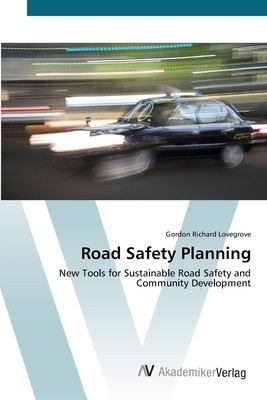
- We will send in 10–14 business days.
- Author: Gordon Richard Lovegrove
- Publisher: AV Akademikerverlag
- ISBN-10: 3639416686
- ISBN-13: 9783639416688
- Format: 15.2 x 22.9 x 1.4 cm, softcover
- Language: English
- SAVE -10% with code: EXTRA
Reviews
Description
Revision with unchanged content. In 2004 the World Health Organization declared the incidence of fatalities and injuries due to road collisions as one of the leading epidemics of our time. The United Nations have made a similar declaration for 2007. This book reviews the traditional engineering responses of governments to this road safety problem, including analytical techniques, effectiveness, and short-comings of the conventional reactive approach. It then describes how to overcome the knowledge gap to a more proactive engineering approach to road safety, including the methodology, development, and use of a new family of reliable empirical tools to do road safety planning, termed macro-level collision prediction models. Several case studies are given, de-mon-stra-ting that this proactive road safety approach can reap significant sus-tain-ability benefits. This book is addressed to professionals and sustainability advocates seeking more sustainable land use and transportation de-velop-ment patterns, like planners, engineers, governments, residents, educators, jour-nalists and Communications Managers. It is also directed towards scien-tists and researchers in Road Safety, Sustainability, Planning and Engineering.
EXTRA 10 % discount with code: EXTRA
The promotion ends in 20d.19:13:06
The discount code is valid when purchasing from 10 €. Discounts do not stack.
- Author: Gordon Richard Lovegrove
- Publisher: AV Akademikerverlag
- ISBN-10: 3639416686
- ISBN-13: 9783639416688
- Format: 15.2 x 22.9 x 1.4 cm, softcover
- Language: English English
Revision with unchanged content. In 2004 the World Health Organization declared the incidence of fatalities and injuries due to road collisions as one of the leading epidemics of our time. The United Nations have made a similar declaration for 2007. This book reviews the traditional engineering responses of governments to this road safety problem, including analytical techniques, effectiveness, and short-comings of the conventional reactive approach. It then describes how to overcome the knowledge gap to a more proactive engineering approach to road safety, including the methodology, development, and use of a new family of reliable empirical tools to do road safety planning, termed macro-level collision prediction models. Several case studies are given, de-mon-stra-ting that this proactive road safety approach can reap significant sus-tain-ability benefits. This book is addressed to professionals and sustainability advocates seeking more sustainable land use and transportation de-velop-ment patterns, like planners, engineers, governments, residents, educators, jour-nalists and Communications Managers. It is also directed towards scien-tists and researchers in Road Safety, Sustainability, Planning and Engineering.


Reviews